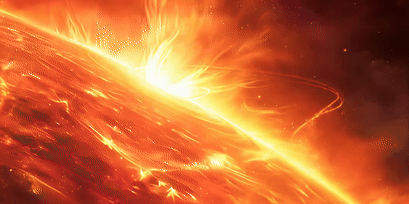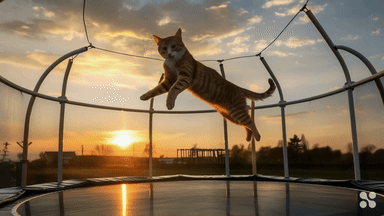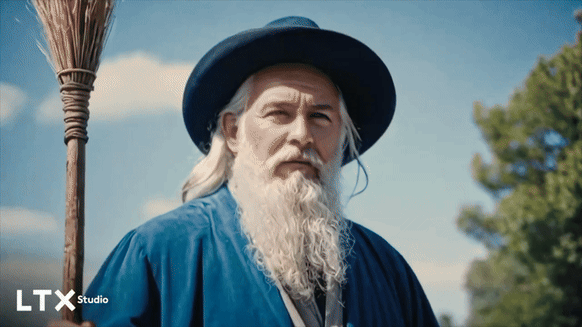OpenAI’s Sora is one of the most impressive AI tools I’ve seen in years of covering the technology but only a handful of professional creatives have been given access so far and it doesn’t look like it will be widely available anytime soon.
We’ve seen dozens of impressive videos from a documentary about an astronaut to a music video about watching the rain. We’ve even seen a short film about a man with a balloon head and a commercial for Toys ‘R’ Us.
Mira Muratti, OpenAI’s Chief Technology Officer, originally hinted we’d get access to Sora this year, but that seems to have slipped. The most recent updated suggested OpenAI’s developers were having issues making it easy to use.
The company says the focus is currently on both safety and usability, which likely includes ensuring guardrails don’t allow it to replicate real people or allow it to be used in misinformation campaigns.
Alternatives to Sora already available
While you’re waiting for Sora, there are several amazing AI video tools already available that can create a range of clips, styles and content to try. These Sora alternatives include Pika Labs and Runway and Luma Labs Dream Machine.
Sora’s biggest selling points were more natural movement and longer initial clip generations, but with the arrival of Dream Machine and Runway Gen-3 some of those unique abilities have already been replicated.
There are now two categories of AI video models and I split them into first and second generation. The first are models like Runway Gen-2, Pika 1.0, Haiper, and any Stable Video Diffusion-based model including the one in Leonardo and NightCafe.
The main limitation of this early generation of AI video tools is in duration. Most can’t do more than 3-6 seconds of consistent motion; some struggle to go beyond 3 seconds. This, coupled with a smaller context window makes consistency tough.
However, the second-gen models, including Runway’s Gen-3 and Luma Labs Dream Machine (as well as unavailable models like Kling and Sora) have much longer initial generations, improved motion understanding and better realism.
Runway
(Image credit: Runway)
Runway is one of the biggest players in this space. Before OpenAI unveiled Sora, Runway had some of the most realistic and impressive generative video content, and remains very impressive, with Gen-3 at a near Sora level of motion quality.
Runway was the first to launch a commercial synthetic video model and has been adding new features and improvements over the past year including very accurate lip-synching, motion brush to control the animation and voice over.
With the launch of Gen-3 you can now create videos starting at ten seconds long. It is currently only in Alpha so some of the more advanced features aren’t available such as video-to-video and clip extension — but its coming soon. Image-to-video has already launched and it is very impressive.
In an increasingly crowded market Runway is still one of the best AI video platforms, and on top of generative content it has good collaboration tools and other image-based AI features such as upscaling and text-to-image.
Runway has a free plan with 125 credits. The standard plan is $15 per month.
Luma Labs Dream Machine

(Image credit: Luma Labs/Future AI)
One of the newest AI video platforms, Luma Labs released Dream Machine seemingly out of nowhere. It offers impressive levels of realism, prompt following and natural motion and has an initial 5-second video generation.
Unlike other platforms Dream Machine charges one credit per generation, making it easier to keep track of what you’re spending or when you’re near the limit.
It automatically improves on your prompt, ensuring better output and one of the most innovative features is its keyframes. You can give it two images — a start and finish point — and tell it how to fill the gap between the two. This is perfect if you want to do a fun transition or have a character walk across the screen.
Being able to extend clips is also particularly powerful in Dream Machine as this allows for character following and fresh scenes. It continues from the final frame of your last video and you can change the motion description for each extension.
Dream Machine has a free plan with 30 generations per month. The standard tier is $30 per month and includes 150 generations.
Kling

(Image credit: Kling AI Video)
Kling AI is a Chinese generative video product from video platform company Kuaishou, its features include longer video generations, improved movement, better prompt following and multi-shot sequences.
Its interface is simple and easy to learn, offering image-to-video and text-to-video with automatic upscaling options and clips starting at 5 or 10 seconds.
I’ve used it to make multiple videos and in every case it captures human and animal motion in a way no other platform I’ve tried has achieved. It also seems to be able to depict emotion with both camera movement and within the characters it generates.
In the text-to-video mode you can start with a 1 second clip, use a very long description and set the orientation to widescreen, phone screen or square. It also allows you to define the camera movement and set a negative prompt.
Kling is free to use with 66 credits per day and between 5 and 10 credits per generation. There isn’t a subscription plan as such but it offers memberships starting at $10 per month for 660 monthly credits.
Pika Labs

(Image credit: Pika Labs)
Pika Labs is one of the two major players in the generative AI video space alongside Runway. Its Pika 1.0 model can create video from images, text or other video, as well as extend a video to up to 12 seconds — although the more you extend it, the worse the motion becomes.
Pika launched last year to a lot of fanfare, sharing a cartoon version of Elon Musk and an impressive inpainting ability that allows you to replace or animate a specific region of a clip.
Pika Labs offers negative prompting and fine control over the motion in the video. It also features sound effects that are either included from a text prompt or aligned to the video and lip sync.
The lip syncing from Pika Labs can be added to video content. So you can have it generate a video from, say, a Midjourney photo, then animate its lips and give it voice. Or, as I did in an experiment, you can animate action figures.
I’m told Pika 2.0 is in development and they recently introduced significant upgrades to the image-to-video model, creating better overall motion and control.
Pika Labs has a free plan with 300 credits. The standard plan is $10 per month.
Leonardo and Night Cafe

(Image credit: Leonardo AI)
Stable Video Diffusion is an open model which means it can be commercially licensed and adapted by other companies. Two of the best examples of this are from Leonardo and Night Cafe, two AI image platforms that offer a range of models including Stable Diffusion itself.
Branded as Motion by Leonardo and Animate by NightCafe, the image platforms essentially do the same thing — take an image you’ve already made with the platform and make it move. You can set the degree of motion but there are minimal options for other controls.
NightCafe’s base plan is $6 per month for 100 credits.
Leonardo has a free plan with 150 creations per day. The basic plan is $10 per month.
FinalFrame

(Image credit: FinalFrame AI generated)
This is a bit of a dark horse in the AI video space with some interesting features. A relatively small bootstrapped company, FinalFrame comfortably competes in terms of quality and features with the likes of Pika Labs and Runway, building out to a “total platform.”
The name stems from the fact FinalFrame builds the next clip based on the final frame of the previous video, improving consistency across longer video generations. You can generate or import a clip, then drop it on to the timeline to create a follow on, or to build a full production.
The startup recently added lip syncing and sound effects for certain users, including an audio track in the timeline view to add those sounds to your videos.
FinalFrame requires the purchase of credit packs which last a month. The basic plan is 20 credits for $2.99.
Haiper

(Image credit: Haiper AI video)
A relative newcomer with its own model, Haiper takes a slightly different approach from other AI video tools, building out an underlying model and training dataset that is better at following the prompt rather than offering fine-tuned control over the motion.
The default mode doesn’t even allow you to change the motion level. It assumes the AI will understand the level of motion from the prompt, and for the most part, it works well. In a few tests, I found leaving the motion set to default worked better than any control I could set.
Haiper has now launched version 1.5 with improved realism and longer initial clips, starting at 8 seconds and extendable.
Haiper has a free plan with 10 creations per day and watermarks with no commercial use. If you want commercial use and to remove watermarks you need the $ 30-a-month Pro plan which includes unlimited video creations.
LTX Studio

(Image credit: LTX Studio/AI Video)
Unlike the others, this is a full generative content platform, able to create a multishot, multiscene video from a text prompt. LTX Studio has images, video, voice-over, music and sound effects; it can generate all of the above at the same time.
The layout is more like a storyboard than the usual prompt box and video player of the other platforms. When you generate video, LTX Studio lets you go in and adapt any single element, including changing the camera angle or pulling in an image to animate from an external application.
I don’t find LTX Studio handles motion as well as Runway or Stable Video, often generating unsightly blurring or warping, but those are issues the others have started to resolve and something LTX Studio owner Lightricks will tackle over time. It also doesn’t have lip sync, but that is likely to come at some point in the future.
LTX Studio has a free plan with 1 hour of generation per month and personal use. For $5 a month you get three hours but if you want commercial use it costs $175 per month and comes with 25 computing hours.


